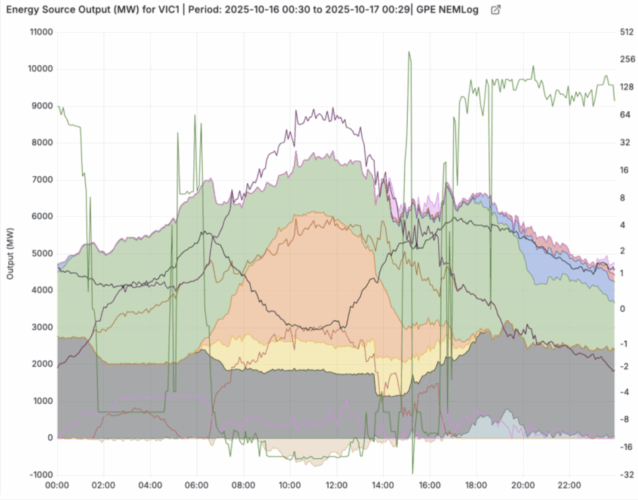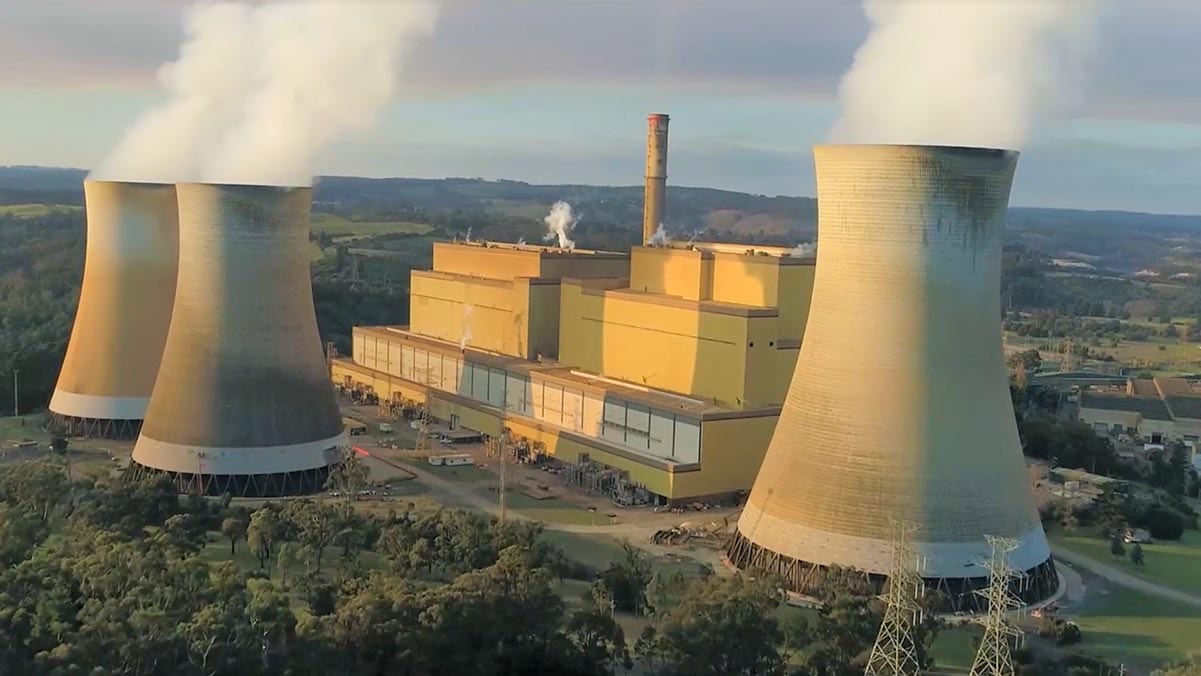The variabilities of the modern grid and the need for flexibility has been underlined this week in Victoria, which on Thursday experienced record levels of wind and solar availability and curtailment, before two large coal generator units suddenly tripped.
According to Geoff Eldridge, a keen market watcher from GPE NEMLog, the level of available large scale renewables in Victoria hit a record level of 8,964 MW at 11.50am (AEST) on Thursday.
The share of renewables actually produced was equivalent to around 83 per cent of state demand, with some being exported and others feeding into batteries, but there was also a high level – 2,700 MW of large scale wind and solar, or around 37 per cent of total demand, that was being curtailed.
That level of curtailment continued for another couple of hours, until 13:34 AEST when two units at Yallourn – numbers 3 & 4 – tripped together, taking 594 MW out of the system. Yallourn’s unit 2 was already offline for repairs.

The response was immediate, as it needs to be. The amount of exports quickly fell and several big batteries stopped charging, reducing the draw on the grid from around 220 MW to just 20 MW.
Behind the scenes, Eldridge says, AEMO directed fast-start gas at Jeeralang on to the market (from 13:50) to provide system strength, as it judged their were insufficient synchronous generators online.
At the time, six of the ten coal units in Victoria were out of action, due to either planned or unplanned maintenance (two at Loy Yang A and one at Loy Yang B). And there is still not enough big batteries with grid forming inverters providing that service, or synchronous condensers.
This all pushed coal output and combined coal and gas output to record low shares of the Victoria grid – 16.9 per cent for coal (beating previous low in February last year), and also 16.9 per cent for coal and gas, being the previous low of 21.9 per cent in December last year.
The curtailment for wind and solar also quickly changed – dropping from nearly 2 GW of wind to less than one gigawatt of wind in just 15 minutes as the first responders – exports and batteries – recalibrated. Just as well that renewables and storage were able to step into the gap created by coal at such short notice!
Eldridge notes that the sudden trip of the coal generators underlines the importance of system strength , a fact acknowledged by AEMO as it continues to navigate its engineering roadmap to times when it can accommodated 100 per cent renewables, even for short periods.
“Fast-response plant, synchronous condensers, grid-forming inverters and targeted network support reduce reliance on directions and improve resilience to rare events and future normal following coal unit retirements,” Eldridge wrote on LinkedIn.
“(We need) flexibility over pure capacity: demand flexibility, storage and transfer capability convert high RE availability into reliable supply across the day,” he added, echoing the mantra at AEMO.
“Today’s records and the Yallourn double-trip underline a simple point: as renewable availability grows, system strength sets the operating limit, and must be planned for alongside flexibility.”
If you would like to join more than 26,000 others and get the latest clean energy news delivered straight to your inbox, for free, please click here to subscribe to our free daily newsletter.
Giles Parkinson is founder and editor-in-chief of Renew Economy, and founder and editor of its EV-focused sister site The Driven. He is the co-host of the weekly Energy Insiders Podcast. Giles has been a journalist for more than 40 years and is a former deputy editor of the Australian Financial Review. You can find him on LinkedIn and on Twitter.

